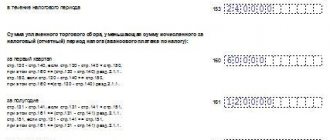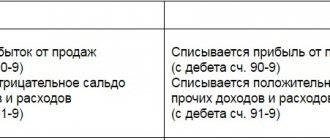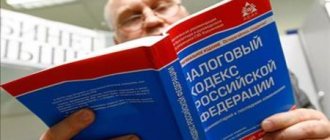The simplified taxation system (STS) is one of five tax regimes, according to which taxes and contributions are paid in a special manner. This tax regime was created to simplify the procedure for filing tax reports, maintaining accounting records of income and expenses, and reducing tax rates. When applying the simplified tax system, a single tax is paid, which replaces property, profit and value added tax.
Who cannot apply the simplified tax system
- organizations operating in the banking, insurance, investment, microfinance sectors, including non-state pension funds, pawnshops and professional participants in the securities market;
- organizations operating in the field of gambling and mining;
- notary and law offices;
- organizations involved in the production of excisable products (alcohol, tobacco products, fuel);
- government and budgetary, as well as foreign organizations;
- organizations with more than 100 employees;
- organizations that have switched to the Unified Agricultural Tax (Unified Agricultural Tax);
- organizations with a residual value of fixed assets of more than 100 million rubles;
- organizations with an annual income of more than 60 million rubles;
- organizations with branches and representative offices;
- organizations that did not submit an application for transition to the simplified tax system in a timely manner in accordance with the procedure established by law.
Types of modes
The procedure for calculating and paying taxes depends on the taxation regime. The activities of individual entrepreneurs (IP) allow them to use:
- STS – simplified taxation system. Suitable for small businesses with few employees. It is easy to keep records, especially for individual entrepreneurs.
- OSN – general taxation system. There are no restrictions on types of activities, number of employees and income. It is the most difficult in terms of reporting and calculating payments to the budget. Convenient for large companies.
- UTII is a single tax on imputed income. Offers “preferential” conditions for certain types of enterprises (catering, veterinary hospital, maintenance, etc.). Income is assessed by physical indicators. Replaces VAT, payments for used property, etc.
- PSN – patent system. Implies obtaining the right to conduct a certain type of activity for a period of up to one year. Simple and convenient, does not require filing declarations.
- Unified agricultural tax - unified agricultural tax. Designed for individual entrepreneurs and organizations involved in the production of crops, livestock products, etc.
Advantages of the simplified tax system for individual entrepreneurs
- Tax reporting under a simplified scheme;
- There is no need to maintain complex accounting records and submit reports to the tax office;
- Possibility of choosing the object of taxation (income tax 6% or income tax minus expenses 15%);
- There is no VAT and personal income tax for business activities;
- Possibility to reduce the simplified tax system by the amount of paid insurance premiums (in whole or in part);
- Submission of reports and declarations to the tax authority is carried out once a year.
Advantages and disadvantages of the simplified tax system for an individual entrepreneur
The main positive aspects of simplification:
1. The simplified tax system replaces 3 taxes: personal income tax, VAT and property tax. As for personal income tax, there is a clear benefit for an individual who has become an entrepreneur: instead of 13% of all charges in his favor, he gives only 6% of income to the state. But if the entrepreneur is also a founder (participant) of an LLC and receives dividends, then personal income tax will need to be paid on them.
There is a caveat regarding property tax: there is a list of real estate objects for which tax will still have to be paid (the so-called objects at cadastral value). This list is determined by the authorized executive body no later than the 1st day of the next tax period and is posted on its official website. Such objects include business centers, shopping malls, office premises, public catering and consumer services, and retail facilities.
As for VAT, the restriction here is associated only with the import of goods from abroad (VAT is paid upon import at customs), as well as when concluding agreements of simple partnership or trust management of property. Overall, replacing the three largest and most annoying taxes with one is an absolute boon for small businesses.
2. Simplified accounting and reporting are truly simplified. The entrepreneur will only need to keep a special book - KUDIR, where he will enter completed business transactions in accordance with the standard. KUDIR is not surrendered anywhere, but is only presented at the request of regulatory authorities.
An individual entrepreneur is not required to maintain accounting records. A tax return is used as tax reporting, which is submitted once at the end of the year until April 30 of the following year. Generally speaking, when the tax period is a year, a lot of time and effort is saved on communicating with various regulatory authorities.
3. An individual entrepreneur using the simplified tax system has the right to reduce the tax by the amount of insurance premiums paid. If an entrepreneur does not have employees, then he has the right to reduce the advance tax payment by the entire amount of insurance premiums paid for himself in a given quarter. Individual entrepreneurs with employees can reduce the tax by 50% at the expense of paid insurance premiums or take the contributions into account as expenses.
4. You can also reduce the tax by the amount of the paid trade tax, which is currently paid only in Moscow.
5. If an individual entrepreneur is registered for the first time and applies the simplified tax system, then he can qualify for tax holidays, that is, work for 2 years at a zero tax rate. Unfortunately, the list of types of activities for obtaining tax holidays is very limited, and besides, it depends on the will of regional authorities. However, entrepreneurs engaged in industrial, scientific or social activities have a chance to gain such an advantage.
Disadvantages of the simplified tax system for individual entrepreneurs:
- You can lose your right to the simplified tax system, and quite unexpectedly. For example, we carried out a major transaction and thereby exceeded the annual income limit of 150 million rubles. You will be automatically transferred to OSNO with its high rates and cumbersome reporting. You will have to submit reports for the entire period according to different rules, and also pay VAT, personal income tax and property tax.
- Your lack of VAT may hit your clients, who will not be able to submit their VAT for reimbursement from the budget. That is, there is a possibility of losing some potential clients who do not want to work with simplified partners.
- When leaving the simplified tax system, losses received are not counted in the new tax regime. The same thing applies when switching from another regime to the simplified tax system.
- There are restrictions on the types of expenses that can be used to reduce your tax base.
- Property and social deductions cannot be applied, while at the same time an individual entrepreneur can do this under the general taxation regime.
Disadvantages of the simplified tax system for individual entrepreneurs
- Limitation of areas of activity where the simplified tax system can be used, as well as a number of conditions under which the simplified tax system cannot be used.
- The list of expenses that can reduce the tax base under the simplified tax system is limited;
- To account for expenses under the simplified tax system “income minus expenses”, rather complex accounting is required, and all documents must be drawn up correctly;
- An organization using the simplified tax system cannot open additional branches;
- Even if an individual entrepreneur operates at a loss, he is not exempt from paying the minimum tax;
- Large companies and firms that pay VAT most often refuse to cooperate with organizations using the simplified tax system, since in fact they lose 18%.
Responsibility of an entrepreneur under the simplified tax system for paying taxes
The obligation to pay taxes on time and in full arises for all entrepreneurs from the moment their business is registered. If malicious evasion occurs, the culprit will face severe punishment, but often the interests of the state are violated due to accounting errors.
The Tax Code of the Russian Federation establishes two types of sanctions: penalties and fines. Forced collection of arrears is carried out by direct write-off in the collection procedure (that is, without instructions from the owner of the bank account). Individual entrepreneurs are given a period of sixty days for voluntary repayment of debt.
In the absence of sufficient funds on the account and the amount of debt is more than 300 thousand rubles. The tax service has the right to initiate bankruptcy proceedings in the manner prescribed by the Civil Code of the Russian Federation.
A simplified form of taxation does not reduce the responsibility of individual entrepreneurs for failure to fulfill fiscal obligations. A one-time violation of reporting rules entails a fine of up to 10 thousand rubles. If mistakes are repeated, the amount doubles. Possible disqualification, ban on conducting commercial activities for two years (maximum). You can get rid of sanctions by promptly correcting your declaration and voluntarily repaying any debts you have incurred.
Evasion of tax obligations is also prosecuted criminally if the amount of damage is recognized by the court as significant. The punishment may be special work or imprisonment for up to 12 months.
For an entrepreneur who pays only a single tax (individual entrepreneur in simplified form), it is not difficult to make calculations, so accidental errors are extremely rare.
Types of simplified tax system and tax calculation
Individual entrepreneurs using the simplified tax system have the opportunity to choose the object of taxation:
- income – 6%;
- income minus expenses – 15%.
In different cases, one or another object of taxation represents a greater benefit.
Calculation of income taxes: profit received * tax base 6%.
For example, the income of an individual entrepreneur for 1 year was 300,000 rubles. The tax will be 18,000 (300,000 *6%).
Calculation of taxes on income minus expenses: (income – expense) * 15%.
For example, the income of an individual entrepreneur for the year was 500,000 rubles, expenses were 300,000 rubles. The tax will be 30,000 rubles (200,000*15%).
IMPORTANT:
1) all expenses must be reflected in the book of income and expenses, and also be confirmed by cash or sales receipts, receipts, invoices and other payment documents.
2) not all expenses are taken into account when calculating taxes. Expenses that can be taken into account are reflected in Art. 346.16 Tax Code of the Russian Federation.
3) taxes on income minus expenses are calculated at a rate of 5 to 15%, depending on the region and type of activity. The easiest way to find out the rate in your region is at the nearest tax office.
Taking into account the nuances described above, you need to take a serious approach to choosing an object of taxation, having first made at least approximate or estimated calculations.
Step-by-step instructions for beginners: how to pay taxes for individual entrepreneurs using the simplified tax system
It is necessary to correctly calculate the amount of taxes and contributions in order to eliminate the possibility of penalties, fines and other phenomena unpleasant for businessmen that complicate the development of the company. Calculations take into account the selected rate of 6 or 15%.
Tax calculation: individual entrepreneur 6% with employees
Provided that there are 5 employees on staff, and the basis for calculations is the income part: 90 thousand (quarter), contributions (for everyone and the individual entrepreneur itself) - 30 thousand. For 6 months, income amounted to 550 thousand, contributions - 30,000 and a mandatory 1% on excess income. It turns out: 550000 -300000X1% = 2 thousand 500 rubles.
How much does an employer pay in taxes for an employee?
Required payments under the simplified system: 90000X6% = 5400 rubles. Subtracting the contributions (30 thousand rubles), we get a negative amount of -24600, taking into account the restrictions of 50%, 5400 rubles should be divided by 2, it turns out 2700 rubles. Duty for 6 months: 550 thousand X 6%, it turns out 33,000. Subtracting fees 33,000 - (30,000 rubles X 2 + 5,000 rubles) you will also get a negative amount of - 32,000 rubles. Accordingly, 33,000 rubles need to be divided in half, resulting in 16,500.
Tax calculation: individual entrepreneur 6% without employees
With an income of 560 thousand rubles per quarter and contributions in the amount of 23,154 rubles, the calculations will be as follows: (560,000 - 300,000) X 1% = 2,600 rubles.
Advance payment = 560,000 X 6% = 33,000. Insurance costs and 1% on excess profits are deducted: 33,000 - 23,154 - 2,600, the final value is 7,246 rubles.
How to calculate individual entrepreneur tax 15%
In the case when an entrepreneur received 200,000 rubles (RF) in profit, and his expenses amounted to 198,000 rubles, then the tax will be equal to 2000 rubles.
How to reduce the simplified tax system
- If an individual entrepreneur does not have employees, the simplified tax system is reduced by the entire amount of insurance premiums. For example, with a simplified tax system of 6%, the income was 250,000 rubles. Insurance premiums amounted to 20,000 rubles. Tax is 15,000 rubles. We reduce the amount of insurance premiums. Total payable is 0 rubles. For example, with a simplified tax system of 6%, the income was 2,000,000 rubles. Insurance premiums amounted to 20,000 rubles. Plus, we take into account the insurance premium of 1% on income over 300,000 rubles. The fee is 17,000 rubles. Total insurance premiums are 37,000 rubles. The tax is 120,000 rubles. We reduce the amount of insurance premiums. Total payment is 83,000 rubles.
- If an individual entrepreneur has hired workers, then the simplified tax system tax can be reduced only by 50% of the amount. For example, with a simplified tax system of 6%, the income was 100,000 rubles. Insurance premiums amounted to 20,000 rubles. The tax amounted to 6,000 rubles. Reduce by 50%. The total payment is 3,000 rubles. For example, with a simplified tax system of 6%, the income was 500,000 rubles. Insurance premiums amounted to 20,000 rubles. The insurance premium of 1% of income exceeding 300,000 rubles amounted to 2,000 rubles. The total amount of contributions is 22,000 rubles. The tax amounted to 30,000 rubles. Reduce by 50%. Total payment: 15,000 rubles.
- If an individual entrepreneur works under the simplified tax system, income minus expenses, it is not possible to reduce taxes by the amount of insurance premiums. But the amount of insurance premiums can be included in expenses.
Increase in insurance premiums in 2021
Let us remind you that starting from 2021, the amount of fixed contributions for individual entrepreneurs is not calculated from the minimum wage established at the beginning of the year. Law No. 335-FZ dated November 27, 2017 amended the Tax Code of the Russian Federation. Art. 430 of the Tax Code of the Russian Federation it is determined that if the payer’s income for the billing period does not exceed 300,000 rubles, then the fixed amount of contributions to pension insurance is:
- 26,545 rubles for the billing period of 2021;
- 29,354 rubles for the billing period of 2021;
- 32,448 rubles for the 2021 billing period.
Thus, the increase in the burden on fixed contributions in 2019 compared to 2021 is 2,809 rubles. And in 2020 it is necessary to pay fixed contributions already 3,094 rubles more than in 2021.
Insurance premiums for health insurance in a fixed amount, regardless of the income of the entrepreneur, will be:
- 5,840 rubles for the billing period of 2021;
- 6,884 rubles for the billing period of 2021;
- 8,426 rubles for the 2021 billing period.
Please note that in case of excess annual income (more than 300,000 rubles), the individual entrepreneur additionally pays 1% of the excess amount. Payment must be made no later than April 1 of the following year.
Changes to the simplified tax system in 2021
- Tax rates. According to amendments to the tax code of the Russian Federation, which came into force on January 1, 2021, regions have the right to change the tax rates applicable to the simplified tax system. Previously, this possibility was provided only for the object of taxation of income minus expenses. Regions, at their discretion, could reduce the tax rate from 15% to 5%. Now the rate can be changed for the object of taxation, income. Regions have the opportunity to reduce tax rates from 6% to 1%. For new subjects of the Russian Federation - Crimea and Sevastopol, this year it is possible to reduce the tax rate to 0%. It is also possible to establish a preferential rate of 0% for individual entrepreneurs engaged in the provision of household services in social, industrial and scientific spheres.
- Income limit on the simplified tax system. The threshold for the maximum amount of income for which the use of the simplified tax system is permitted has been increased. In 2021, those whose income does not exceed 79.74 million will be able to work under the simplified tax system. Also, organizations with an income of no more than 59.805 million rubles for the first three quarters will be able to apply in 2021 to switch to a simplified taxation system.
Taxes
If the activity is carried out directly by the entrepreneur himself, then the fees are correspondingly reduced, since there is no need to pay payroll taxes.
Interesting: How much taxes does an individual entrepreneur pay - an overview of tax regimes and rates.
What taxes do individual entrepreneurs without employees pay?
The list of taxes paid and reports submitted depends on the chosen taxation scheme.
simplified tax system
Under the simplified taxation system (STS), individual entrepreneurs without employees are required to pay income tax and insurance premiums. If there are taxable objects, the following will be additionally charged:
- property tax on property included in the regional list;
- VAT on imports.
The income tax rate depends on what exactly is chosen as the basis for calculation.
- 6 percent is charged on all income;
- if income decreases by the amount of confirmed expenses, then the rate is 15%.
When calculating, it is necessary to take into account the nuances for each option:
The 6% tax is calculated on the total amount of income, but when paid it is reduced by a fixed amount of insurance premiums. Thus:
- if the income tax is less than or equal to the insurance payment, then it is not paid;
- if the tax is higher, then the difference is transferred to the budget after subtracting a fixed amount.
15% tax is charged on the amount of income minus expenses, including insurance premiums. But this formula applies only to entrepreneurs who declare profits, i.e. excess of income over expenses. If a loss or minimal income is declared, there are two options for calculating income tax:
- in case of loss – 1% of the total income is paid;
- for profits not exceeding 1% of income, a minimum tax of 1% is paid.
Important! How is personal income tax calculated for individual entrepreneurs using the simplified tax system without employees? If an individual entrepreneur works alone under the simplified tax system, he is exempt from personal income tax, since the tax is included in a single payment from profit under a simplified system, annually transferred to the budget. At the same time, there is no exemption from mandatory contributions to compulsory medical insurance and compulsory health insurance. In addition, if the income exceeds 300 thousand rubles, the individual entrepreneur must pay an additional 1% on the excess amount. Consequently, for such individual entrepreneurs, the issue of filing a declaration in form 3-NDFL is not relevant, since the purpose of this declaration is to reflect the payment of this tax.
UTII for individual entrepreneurs without employees
Entrepreneurs can choose a single tax on imputed income if they are engaged in activities that local authorities have included in a special list. In this case, the tax is not charged on actual income, but on the estimated amount that a business representative in this area can receive. The tax rate is determined by local authorities and can range from 7.5 to 15% of the basic income. The imputed income system does not exist in all regions and is fully regulated by decisions of municipal authorities.
Interesting: Will UTII for individual entrepreneurs be canceled from 2021 to 2021 and what will happen in return?
Patent
A simplified system in the form of acquiring a patent applies to entrepreneurs engaged in activities included in the relevant list. At the level of the Russian Federation, the adopted list contains more than 60 items, mainly services provided to the population and retail trade. Municipal authorities can add types of activities that they consider relevant in the region, but do not have the right to exclude those established by the state. The acquisition of a patent exempts the entrepreneur from paying other taxes, including income tax.
An individual entrepreneur on a patent without employees must take into account that the cost of a patent depends on the region and occupation. Every year local authorities publish a list indicating the cost.
BASIC
The general tax system provides for the payment of personal income tax in the amount of 13% of the amount of income received, adjusted by the amount of confirmed expenses or by 20% of income if there is nothing to confirm expenses. Individual entrepreneurs also have the right to use other types of deductions provided for by law.
This system usually involves the payment of VAT and is used when working with legal entities.
It is important to know! To receive benefits from the state in social areas, financial assistance from federal or municipal authorities, or obtain a loan, individuals must provide a certificate of available income, since the amount of assistance directly depends on the amount of income of the applicant. In order to confirm the income received, citizens of the Russian Federation submit certificates issued and executed by employers according to the 2-NDFL form approved by law. An individual entrepreneur can also take advantage of this rule.
How much are mandatory contributions?
All entrepreneurs are required to pay annual insurance premiums for themselves and their employees. If an individual entrepreneur works alone, then he pays a mandatory fixed amount of insurance premiums. In 2019 this amount is 36,238 rubles. Those. if the amount of annual income does not exceed 603,966 rubles, then the income tax is zero and you will have to pay only to the insurance fund. For individual entrepreneurs whose annual income exceeds 300 thousand rubles, the amount increases by 1% of the excess amount.
Fixed insurance premiums are paid by individual entrepreneurs in any case, regardless of the presence of activity. An entrepreneur can receive a deferment if in the reporting year he served in the army, cared for a child under 1.5 years old, an elderly person over 80 years old, or a disabled person.
How to report to the tax authorities
The main type of reporting to the tax service is an income statement. Its form may differ for different taxation systems and is approved by the Federal Tax Service.
Deadlines for filing returns for quarterly reporting for individual entrepreneurs without employees
Individual entrepreneur reporting on the simplified tax system without employees
Individual entrepreneurs and the simplified tax system submit a declaration after the end of the tax period (calendar year), as well as when deciding to terminate official activities and before closing the individual entrepreneur.
The annual declaration must be submitted next year by April 30.
The absence of economic activity does not relieve one from the obligation to submit a declaration and from fines for its absence or late submission.
UTII
The peculiarity of reporting for individual entrepreneurs without employees for imputation (imputed tax) is a quarterly base period. Those. During the year, 4 declarations must be submitted by the 20th day in April, July, October and January.
Penalties are provided in the same amount as for other forms of reporting.
workers
Patent
If an entrepreneur pays for a patent and does not conduct other types of activities, then they do not submit a declaration. The exception is cases if income for the year exceeds the maximum threshold provided for this taxation system (60 million rubles).
Individual entrepreneur reporting on OSNO without employees
Under the general taxation system, the income declaration is submitted quarterly, but the information in it is indicated on an accrual basis, starting from the beginning of the year. When calculating tax, you can take into account expenses and losses of previous periods.
Interesting: Refund of overpaid tax for individual entrepreneurs: procedure, terms of return, offset of the amount.
Deadlines for paying taxes under the simplified tax system
The simplified tax system is paid 4 times a year, quarterly, that is, three advance payments, and one annual. The deadline for advance payments is the 25th day of the third month of each quarter, for annual payments - April 30 of the year following the previous tax period.
First quarter: payment deadline – April 25;
Second quarter: payment deadline – July 25;
Third quarter: payment deadline – October 25;
Fourth quarter: payment deadline is April 30 of the following year.
Submitting a declaration and paying tax
The tax period for individual entrepreneurs using the simplified tax system is one calendar year. No later than April 30, the entrepreneur must provide a declaration, as well as forms and reports (2-NDFL, 6-NDFL, 4-FSS, SZV-STAZH and SZV-M) if he hires employees. This is the general procedure.
An individual entrepreneur must report unscheduled according to the simplified tax system in other cases:
| Reason for extraordinary report | Report submission date |
| Removal from the register | Linked to the date of exclusion from the Unified State Register of Individual Entrepreneurs (no later than 25 days) |
| Termination of activities allowing the use of the simplified tax system | Indicated in the notice of termination of the simplified tax system (no later than the 25th of the next month) |
| Loss of the right to the simplified tax system | Beginning of the quarter following the date of detection of non-compliance of the individual entrepreneur with the requirements for the application of the simplified tax system (no later than the 25th day of the month following the last working quarter) |
You do not need to take the KUDiR record book to the tax office, but you should be prepared to have it checked.
Reporting periods, unlike tax periods, end once a quarter and half a year, but a declaration is not submitted for them.
It is necessary to carefully monitor the form approved by the Federal Tax Service: it sometimes changes, and is not accepted in its outdated form. The declaration can be sent by regular mail with notification, electronically, or by delivering the completed form in person.
Violation of the filing deadlines is punishable by a fine, the amount of which depends on the size of the declared obligations.
In practice, entrepreneurs using taxation under the simplified tax system submit unified simplified declaration forms a few days earlier in order to be able to make corrections. It indicates income, and if necessary, expenses for last year’s tax period. The simplified tax system often employs newly opened individual entrepreneurs with a relatively small turnover. Simplified for beginner businessmen is usually the best option, thanks to its uncomplicated accounting and reporting system.








